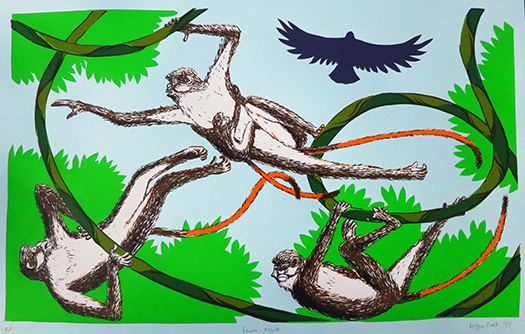I’m just back from three weeks in Mexico, most of which I spent traveling with Mazatl in Chiapas, the southernmost state and home to the Zapatista movement and its system of autonomous rural municipalities. These communities are built on land expropriated from underutilized ranches, owned by wealthy land-barons and seized from them during the initial uprising of indigenous communities on January 1st, 1994. That was the date that NAFTA (the North American Free Trade Agreement) took effect, something which has been utterly disastrous for Mexico in general and the indigenous Maya communities of Chiapas in particular.
This year was the 20th anniversary of that uprising, and Mazatl and I traveled to San Cristobal de las Casas in hopes of painting a mural to celebrate the fact.
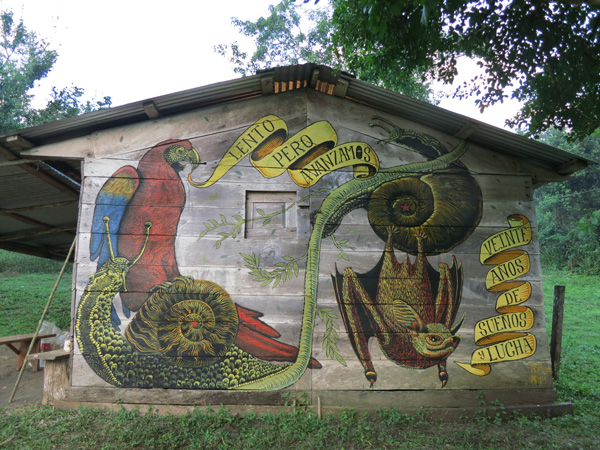
We ended up, on New Year’s Eve, in the more-or-less remote community of La Union, two hours from the seething tourist metropolis that San Cristobal has become, on muddy roads sticky with limestone dust. We spent the New Year in La Union’s small Zapatista community’s plank church, eating sweet breads and drinking coffee with 5 families loyal to the cause of the EZLN. The rest of the village is dominated by members of Mexico’s mainstream political parties- many of whom were previously aligned with the Zapatista cause, but who have been seduced over the years by cynical offers of government largesse. I went to bed early, while Santi stayed up with the members of this small, embattled community to sing the Zapatista anthem at midnight and offer up a chorus of “Viva!” to everything that could be thought of that was good.
The next two days we painted furiously on the rough wood wall of the guest-house, where visitors to the community stay.
Up at dawn with the birds, the families of the community brought us coffee during the day, and pozol in the afternoon- a thick, lightly fermented corn mash that farmers drink all day long while tending their crops. In our discussions on themes, Santi and I had settled on the idea of snails, a central symbol of Zapatismo, carrying flying creatures. We wanted to try to communicate the slow and steady spirit that the project of autonomy represents; something unglamorous but persistent. “Slowly, but we’re moving forward” reads the text at top. “Twenty years of dreams and struggle” reads the text at right. Here’s a link to a GIF of Santi and I painting.
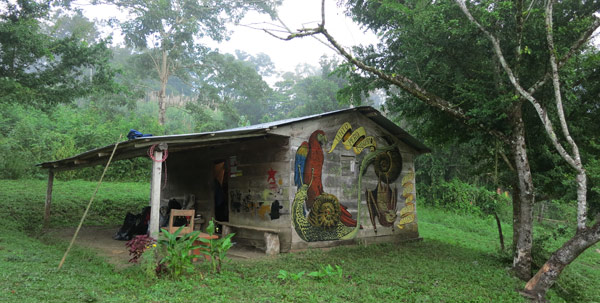
On the afternoon of the second day we were led up the nearby mountain for a swim in a series of cascades. The water was so thick with lime that trees fallen in the jewel-blue water had turned to stone.
On the following day we said goodbye to our hosts and traveled to the community of Moyses Gandhi, where we met up with a large contingent of people from Mexico and the US, including fellow Justseeds member Favianna Rodriguez and the Black Panther Party Minister for Culture- Emory Douglas. We set to work painting a new storefront, built at the crossroads in front of the reclaimed land which the community had seized 20 years ago and defended since.
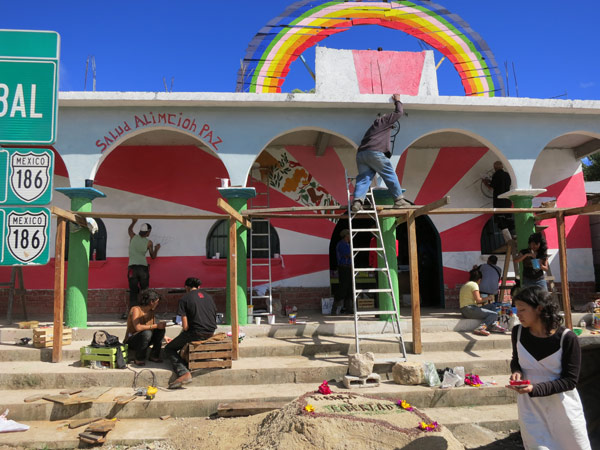
It was a whirlwind of work, addressing four major themes of culture, production, health and education. Emory, spry at 70 and fresh from scrambling up the steep slick slopes of the village of Commandanta Ramona, climbed the rickety scaffold at the front of the store to paint an iconic Zapatista snail.
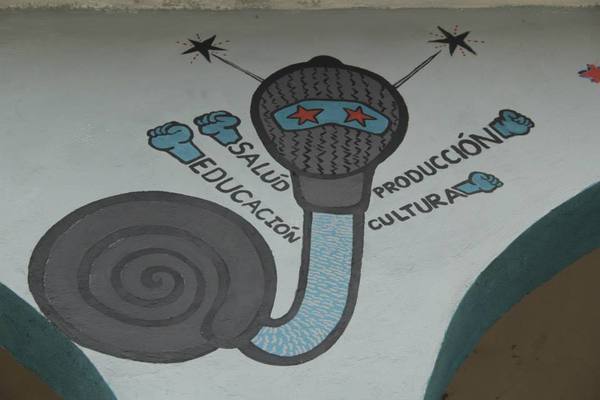
I’d been assigned production.

Mazatl did culture.
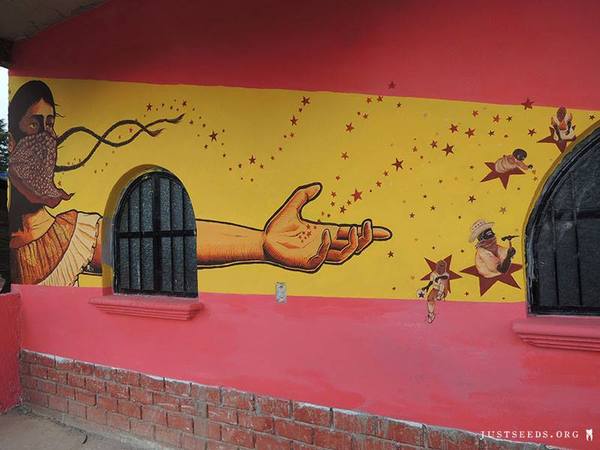
Favianna worked on education.

Caleb Duarte, who’d coordinated the project, worked on health.
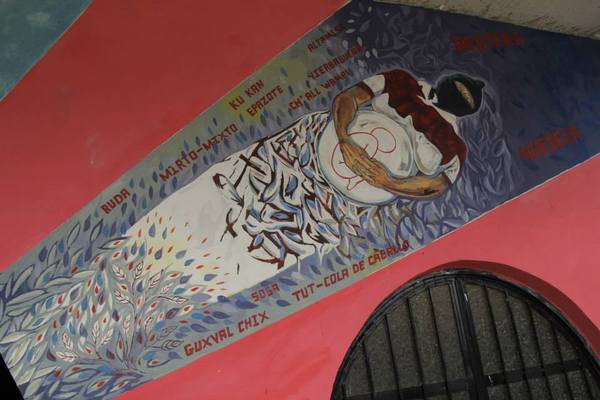
These communities have been defending themselves for centuries, and the advent of Zapatismo is just the newest phase of their resistance to colonial imposition. Colleague Kehben Grifter of the Beehive Collective recently told me about Melipona bees, native to central America, grievously endangered and sacred, historically, to the Maya. There’s a mythology that explains the diminishment of Melipona in the face of encroaching European bees as analogous to the banishment and dispossession endured by the Maya. The bees, however, endure, as do the people. Small movements, steady progressions, a stolid and stubborn persistence in the face of seemingly unsurmountable odds.
Viva! Thanks to all the friends and colleagues who helped to make this all work out the way it did.




